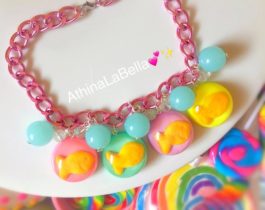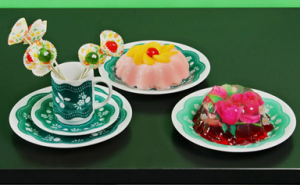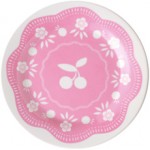Part Two: The Essential Elements of Entrepreneurialism
“He who would learn to fly one day must first learn to stand and walk and run and climb and dance; one cannot fly into flying.” – Nietzsche
Hopefully, from our work together on the previous post you’ll have some idea of the unique career you want to build. Now is the time to look at what is required from you to achieve this, and how you can acquire, cultivate and harvest these traits to your best advantage. Even if you haven’t 100% pinned down your ideal career, working on this in the mean time will only serve to enhance your prospects.
That ladder again…
Designing your own career is not a clear-cut thing, so it does not merely entail clear-cut procedures to attain it, like achieving basic qualifications, writing an average CV or applying for an advertised position. Your own career requires more; it requires passion; it requires initiative and brazen ambition; it requires jumping on all opportunities, and manufacturing the opportunities if they don’t exist; it has to justify itself by the very splendor that the ‘work’ brings you, before you even begin to contemplate the money you could make.
That said, you shouldn’t lose sight of the practical measures in the design of your own career if you want to make a practical living from it. As I previously highlighted: whether we opt for the conventional or creative career, we are still on a ladder. The only difference is who chooses the steps.
You need to conjure your own steps, and then take them with dedication.
I strongly advise writing down your prospective steps if you’re serious about success. Designing your own career isn’t easy, in fact it requires far, far more work than any other option, but you must love this work, or at least love the thought of where it will take you enough to bury yourself in even its most mundane elements with reckless abandon.
I can’t stress enough how strongly you have to want to design your own career if it is ever going to happen, it has to burst out of you like bubbles from a shaken can – if it seems too much like hard work now, know that it’ll get harder before it gets any easier. I don’t say this to put you off, not at all; I’m here to encourage you! I simply want to portray the seriousness of what you’re embarking upon, this is a huge part of your life, so do it right.
But back to those steps…
Here’s a guideline:
 Where you are now. Education and ambition, laying foundations by getting qualified and testing the water. A time for work-experience, seeking a mentor etc.
Where you are now. Education and ambition, laying foundations by getting qualified and testing the water. A time for work-experience, seeking a mentor etc.
 Establish a product. A book, a collection of paintings or photography, a brand, a form of design, a celebrity self, a voice, a viewpoint etc.
Establish a product. A book, a collection of paintings or photography, a brand, a form of design, a celebrity self, a voice, a viewpoint etc.
 Refine, improve, and update product.
Refine, improve, and update product.
 Sell product. Look at ways to sell more product/ market product. Create a website, go on tour, create flyers, get a stand at an event etc.
Sell product. Look at ways to sell more product/ market product. Create a website, go on tour, create flyers, get a stand at an event etc.
 Refine, improve, and update product.
Refine, improve, and update product.
 Expand on product; bring in outside help. Create more products/more angles to your one main product.
Expand on product; bring in outside help. Create more products/more angles to your one main product.
 Let others sell product for you, whether commercial or not. Affiliate programs, Amazon, local stores or galleries.
Let others sell product for you, whether commercial or not. Affiliate programs, Amazon, local stores or galleries.
 Refine, improve, and update product.
Refine, improve, and update product.
 Take product elsewhere, into new markets, perhaps re-branding it.
Take product elsewhere, into new markets, perhaps re-branding it.
 Ultimate goal. (Mansion? Fame? Florida retirement?)
Ultimate goal. (Mansion? Fame? Florida retirement?)
You are always selling a product in any career, whether that product is yourself, your art, a service – you have something to offer, and you receive recompense in return. This is your product, but call it whatever you like: your offering, your merchandise, your ideas.
Don’t feel like you have to stick closely to the above guidelines, your own career is your own, after all, and the steps will be uniquely yours. Just make them clear, measurable, and place them somewhere you’ll look at often and repeatedly.
The top three traits to entrepreneurialism and designing you own career.
There is no magic formula that mixes to make you an instant entrepreneur. You should know already if you have a passion strong enough to carry you along your own unique career path, and that is the only real starting point. However, here are three factors I consider the most important in any aspiring artistic tycoon.
Be inspired because…
“If you have to support yourself, you had bloody well better find some way that is going to be interesting.” – Katherine Hepburn
You have to find a medium of work that has you jumping out of bed at 5am because you can’t wait to get started (okay, maybe 8am…); one that has projects ticking over in your mind all day and that you can viably dedicate hours upon hours of your time to, for what is often little or no pay to begin with.
Be sure to protect and nurture this inspiration, not take it for granted; take yourself on a cultural outing once in a while, make time for watching interesting movies, read books, and carry a notebook to catch your best brainwaves like butterflies in a jar. Think of your source of inspiration as a well that needs to be replenished often.
Be Fearless because…
“You’ve got to jump off cliffs, all the time, and build your wings on the way down.” – Ray Bradbury
You must be genuinely prepared for hard work and possible failures in the quest for your own career; but know that failing is never truly failing if we can take a lesson from it. Take chances, even if you don’t fully know what the outcome will be, even if you are only 60% prepared. Jump in at the deep end and you’ll probably find you can float, if not swim laps!
Be a risk-taker and an authenticist (new favorite made-up word meaning someone who is true to themselves.) If an opportunity scares you, it’s probably the exact one you should take. Dream big dreams and get a successful mindset because, if you act like a success, you will eventually realize success.
Be a Leader because…
“If you don’t stand for something, you’ll fall for anything.” – Michael Evans
Have a message you want to spread and a clear goal in mind at all times, or else you’re liable to stray from it. Not that this goal should be unbending, but you need to at least be aware if it does morph into something else. Prepare an elevator pitch (aptly named to be short enough to say on an average elevator ride i.e. one to three minutes) if the ideal time to sell your product should arise unexpectedly; keep all your dealings consistent with this pitch.
Form your tribe.
Common Problems with the Creative Career
The above is all well and good, but we have to prepare ourselves for the bumps and knocks of entrepreneurialism too. Like in any conventional career, you will encounter blocks on the creative path. Often, though, these blocks will be internal issues, not external ones – making them simultaneously easier (you’re the only issue to get over, no middle man or external barrier) to be got over, and more difficult (changing yourself is notoriously tricky when you are the only person there to answer to; requires immense will.)
Again, this isn’t with an aim to put you off, but to arm you with a mindset to defeat them, and to help you understand why you’ll need to get good at the positive traits I’ve already mentioned.
Time-management
The bad news is that this is something you’ll have to get good at. The good news is that the way you do this is totally up to you. When it’s your own work, deadlines will often be wishy-washy or even non-existent, but what if you’re just not that organized generally? You need to construct a system for how you deal with your time, whether that’s ‘every night from 6-8’ or ‘I feel so inspired, I’m just going to spend all day on my art, even if I do nothing for the rest of the week’.
You must get to know your productive self and how that self thrives: first thing in the morning, last thing at night, on the weekend, at the library, with a laptop in Starbucks etc. You need to write down a system that works for you, even if you avoid anything too specific. For more on time-management, read my article on How to Avoid Procrastination.
Lack of Opportunities
On the last first part of this series I received this from a reader: “…what stands in my way are the meagre opportunities and the lack of support from family and friends who do not believe in setting up a creative career, and hence won’t help in finances and the like.” My words on finances will come later in the series, but opportunities and support are essential factors to be overcome in all creative endeavors.
Believe me, opportunities are out there. Seek and you will find. If opportunities don’t seem to exist, you must take action to create them. Dedicate a day to trawling the internet with keyword Google searches and save your findings in a ‘Favorites’ folder. There are people out there, just like you, succeeding in what you want to do; link up with them, get work experience with them, interview them for a blog, find out how they got where they are and mimic it.
Find courses you can take in or around your subject, as this is often the best way to meet real, working professionals in the business. Meet other creative people in your community; even if their skills differ from yours, you can work together. For example, a web designer could assist a photographer to build a website, and the photographer could return the favor with help on promotional pictures.
Lack of Support
Going it alone career-wise is very often championed by the introvert. Why? Because it can be a lonely business; it requires someone who is happy to depend on themselves and spend a great deal of time working over their own thoughts and ideas. I’ve been lucky, I feel I can achieve great things because of the support network I have, but I know this isn’t always the case. Financial support can be sourced elsewhere (more information on this to come later) but emotional support of friends and family is truly priceless – and without it you can feel a bit lost.
Join a community, whether locally or online, no matter your niche, one will exist somewhere. If it doesn’t – set one up, even if it’s only a Facebook group. This kind of support won’t act as a replacement for that of close personal relationships, but it can surely help, and who knows what will come of the links you will forge.
Depending on your situation, if you believe in yourself enough and start to see small successes, your family and friends will come around. You have to look for the positive, create the positive, and you will find that you will attract positivity.
Dealing with People
Despite what I’ve said on the subject of support, an independent career will never be 100% you and you alone. Whether you’re collaborating, targeting a certain market, networking – whatever – you need to know about people, even if that’s a very small niche of people. It’s in your interest to learn how to interact, impress, excite and enlighten your public – as much for their benefit as your own. Establish yourself as a go-to person in your business, and your success will only grow.
Consider this your initiation into the world of your dream career! Next up will be Part Three: Love & Learning in Equal Measure where I’ll consider questions of gratitude and education, before we move on to the essential question of cold hard cash in Part Four: Making Your Passion Pay.












 Not only do you have to love doing it, you have to have a certain amount of love for the work involved in doing it. For example, I would really like to be a property developer; I’m interested in buildings, interior design and the pleasure that comes from renewing something tired and old. However, I’m not one for physical labour – a bit here and there, sure, but stripping walls, plastering, painting – it just isn’t for me; I’m an ideas person. Therefore, I would either need a great deal of start-up money to outsource this work, or I’d need to partner up with someone who wants the challenge – it’s just logic. Whereas, when it comes to writing, I love the concept, the materials, the result and the work involved – it’s win win.
Not only do you have to love doing it, you have to have a certain amount of love for the work involved in doing it. For example, I would really like to be a property developer; I’m interested in buildings, interior design and the pleasure that comes from renewing something tired and old. However, I’m not one for physical labour – a bit here and there, sure, but stripping walls, plastering, painting – it just isn’t for me; I’m an ideas person. Therefore, I would either need a great deal of start-up money to outsource this work, or I’d need to partner up with someone who wants the challenge – it’s just logic. Whereas, when it comes to writing, I love the concept, the materials, the result and the work involved – it’s win win. 



















